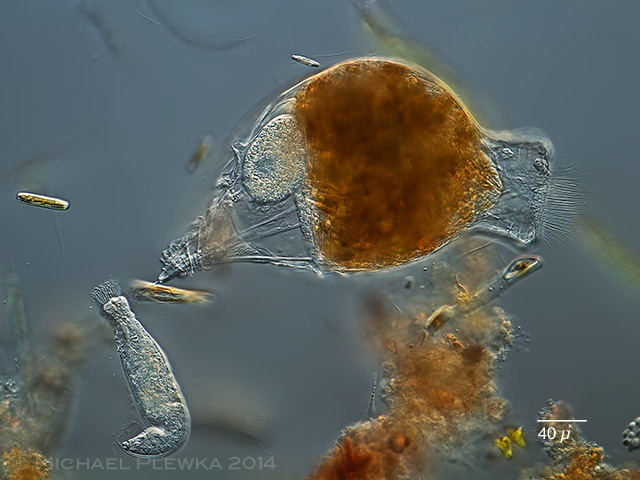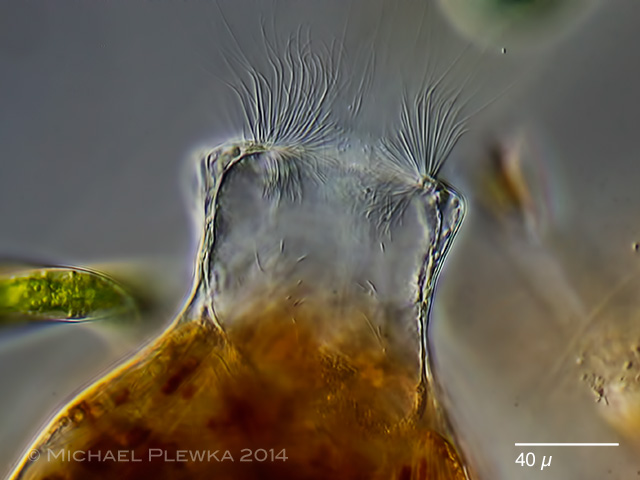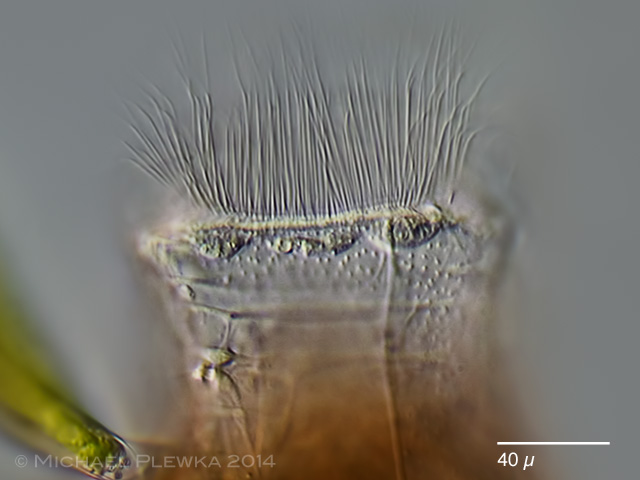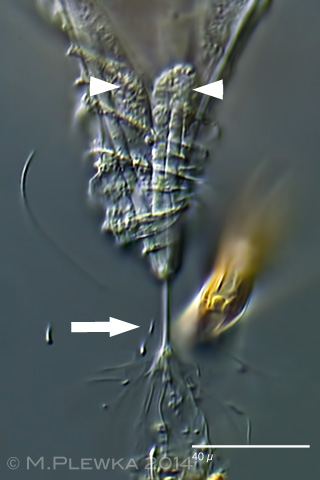| Collotheca edentata; a rotifer which often contains masses of algae, preferably diatoms, but desmids like Tetmemorus (labelled Te in the above image) could be observed as well. It could be observed that most of the algae move/ creep actively into the vestibulum of C. edentata. If the algae touch the sensory cilia inside of the vestibulum contractions of muscles transport the algae into the proventriculus, a cavity located functionally before the stomach. The liquid of the proventriculus is yellowish-brownish suggesting that there are already digestive processes going on. A similar feeding behavior can be observed in the species Collotheca atrochoides. As KOSTE points out, the name "edentata" (= without dents) refers to the fact that former researchers could not find any trophi. Because of its small size it is very difficult to find it. Also because of its small size it is not capable of transporting the algae with the shells into the stomach, instead it is used to transport oil droplets from the predigested diatoms or other algae into the stomach. Therefore it is likely that the shells of the algae (made of silica or cellulose) remain in the animal until it dies, or even that the ever increasing volume of shells causes the death of C. edentata. |
|
| |
 |
| Collotheca edentata; another specimen from (2). The diet of this specimen is -among other algae- Cylindrocystis brebissoni. |
| |
 |
| Collotheca edentata; another specimen with an egg. In the left corner a juvenile specimen is visible. |
| |
 |
| Collotheca edentata; juvenile specimen (Obj. 40x) with eyespot. Crop of the above image. |
| |
 |
 |
| Collotheca edentata; two aspects of the trochus, different focus planes. |
| |
 |
| Collotheca edentata is a sessile rotifer. It attaches to the substrate by a foot with stalk (arrow). The triangles point to the foot glands. |
| |
| |
| Location: Pillerseemoor, Tirol, Austria (1); Paradieswiese, Tirol, Austria (2) |
| Habitat: Periphyton (1); bog with Sphagnum (2) |
| Date: 28.07.2014 (1); 13.10.2014 (2) |